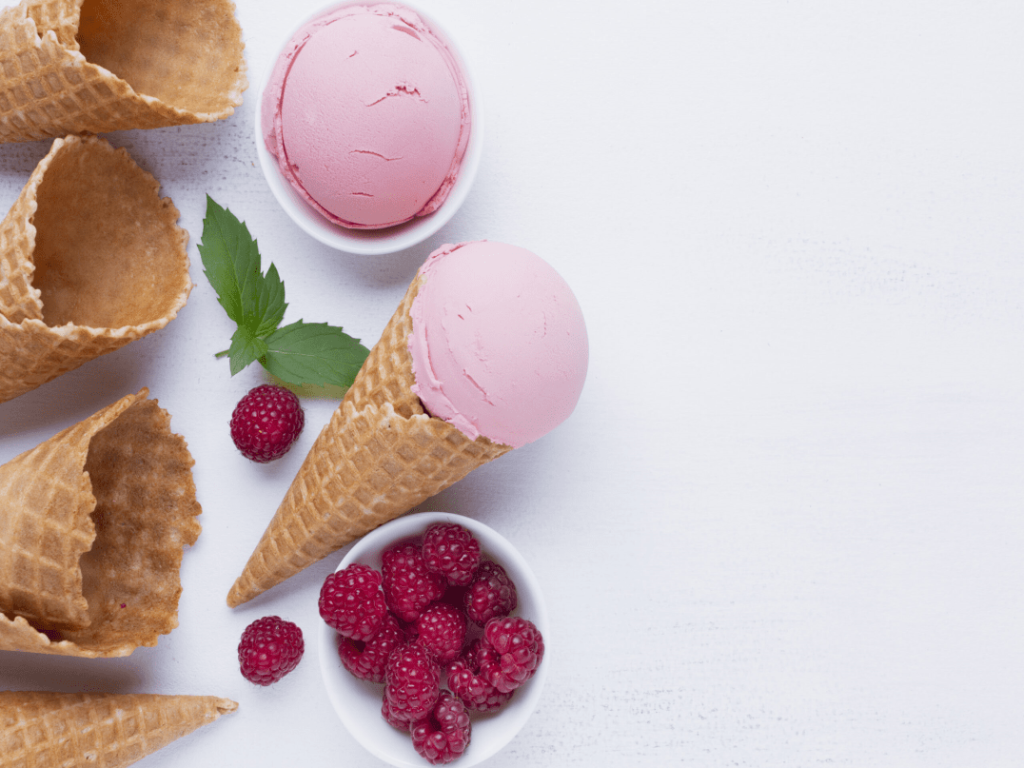If you’re searching for a frozen treat unlike anything you’ve ever tasted, you’ve found a secret of the Arab world’s cuisine. Arabic ice cream, locally known as Booza (البوظة), isn’t just a dessert; it’s a centuries-old tradition famous for its unique texture and deep flavor.
Unlike the soft, airy Western variety, this Arab ice cream is dense, slow-melting, and wonderfully stretchy. This article will introduce you to this distinctive ice cream Arabic style, explain what makes it special, and guide you through its history and traditions.
What Makes Arabic Ice Cream So Unique?
The most defining characteristic of Booza is its texture—it is elastic and chewy. This characteristic is achieved through two unique ingredients and a highly specialized preparation method.
The Secret Ingredients
The stretchy quality and slow melt of this Arab ice cream come from two key natural ingredients:
- Mastic (المستكة): This is a resin (or sap) extracted from the mastic tree. Mastic imparts a pine-like flavor and, crucially, creates the chewy, elastic texture that allows the ice cream to stretch without breaking.
- Salep (السحلب): This is flour made from the root of a wild orchid. Salep acts as a powerful natural thickener and stabilizer. It is responsible for the ice cream’s density and its ability to resist melting quickly, making it suitable for hot climates.
The Texture: Dense and Slow to Melt
Thanks to the combined effect of mastic and salep, this ice cream Arabic style offers:
- Stretchiness: It can be pulled and shaped, often cut with a knife rather than scooped.
- Heat Resistance: It stays frozen longer than regular ice cream, which was essential for street vendors throughout history.
The Tradition: Damascus and the Art of Booza
The most famous and historic form of Arabic ice cream is Damascus Booza, originating in the ancient city of Damascus, Syria.
Flavors and Presentation
While the texture is the main feature, the flavors are rich and traditional:
- Pistachio: The most classic presentation, where the ice cream is typically coated in a generous layer of crushed green pistachios (الفستق الحلبي).
- Kashta (Cream): A richer flavor made with fresh clotted cream, giving it an even more decadent taste.
- Rose or Orange: Simpler flavors often featuring rose water or orange blossom water.
The Performance of Pounding
The way Booza is made is a performance and a cultural artifact in itself. Traditional vendors use a specific technique:
- Pounding: The mixture is placed in a deep, metal or wooden mortar (الهاون).
- Stretching: The vendor then repeatedly and vigorously pounds the mixture with a long wooden mallet (المدقة الخشبية).
This continuous pounding and kneading process is what activates the mastic and salep, creating the dense, chewy, and highly elastic texture that defines genuine Arab ice cream.
Why You Should Seek Out Arabic Ice Cream
Trying Booza is not just trying dessert; it’s engaging with a sweet, edible piece of history.
- Taste and Experience: You will encounter deep, complex flavors combined with a satisfying, chewy texture that is entirely new.
- Cultural Insight: The tradition of the street vendor pounding the mixture is a direct link to the region’s cultural past and hospitality.
- Perfect Treat: It’s the ultimate slow-melt dessert for a warm day!
Conclusion: If you are looking for an unforgettable frozen treat, seek out the traditional Arabic ice cream, or “Booza.” It’s a dessert that celebrates texture, flavor, and authentic handmade tradition.
Ready to explore the authentic flavors of the Arab world and learn more about its fascinating customs? Download the Kaleela app now and start your cultural journey today!



